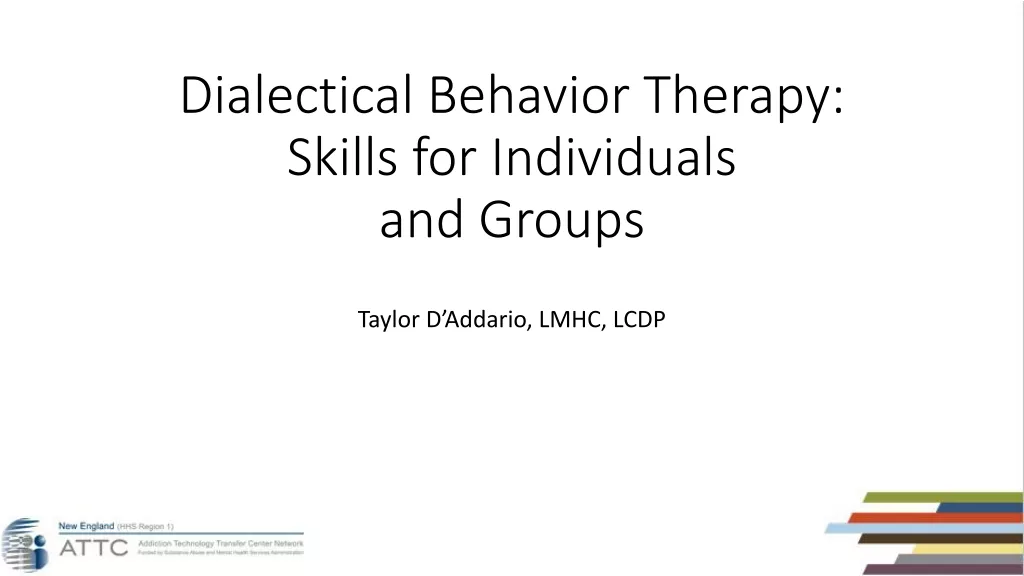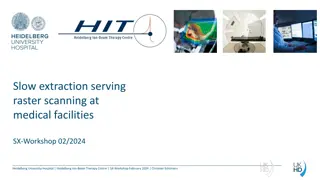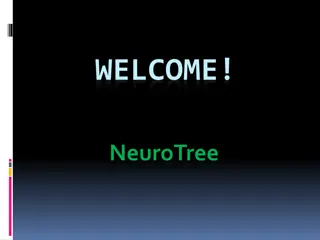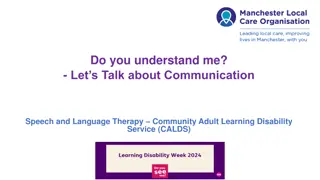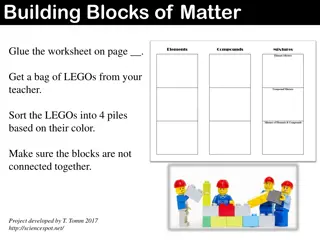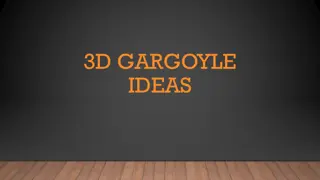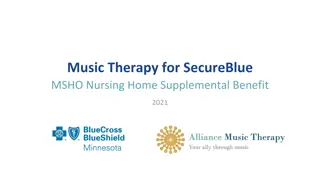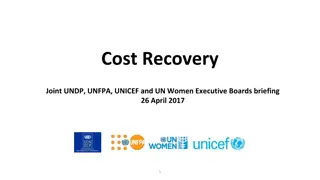Understanding Lego Therapy for Children with Social Communication Difficulties
Lego therapy is a social development program for children with autism spectrum disorder or social communication difficulties. It involves using Lego bricks and role-playing to enhance skills like sharing, turn-taking, following rules, and problem-solving. Children benefit from improved communication, fine motor skills, and cooperative play through fun and engaging sessions that also promote creativity.
Download Presentation

Please find below an Image/Link to download the presentation.
The content on the website is provided AS IS for your information and personal use only. It may not be sold, licensed, or shared on other websites without obtaining consent from the author. Download presentation by click this link. If you encounter any issues during the download, it is possible that the publisher has removed the file from their server.
E N D
Presentation Transcript
What is Lego Therapy? What is Lego Therapy? Lego therapy is a social development program for children with autism spectrum disorder (ASD) or other social communication difficulties. This is a one hour activity which entails the use of Lego bricks and participants taking on different roles (Engineer, builder and supplier). Lego Therapy helps with social skills such as sharing, turn-taking, following rules, using names and problem-solving.
What kids get from Lego therapy? What kids get from Lego therapy? Adults obviously gain a lot by seeing the development of their child but what do the children get from the sessions: 1. Fun and enjoyment 2. Better Communication skills 3. Learning to follow rules 4. Using fine motor skills 5. Co-operative play
Freestyle building Freestyle building Allows the children to build their very own models and allow them to use their own imaginations. If a child has an idea encourage them to try and create it. This doesn t have to be a solo task.
Group Structure Group Structure Sessions can last between 30 minutes and 90 minutes. However, at least an hour gets the best results. At least two children but can be done a 1-to-1 basis. Usually do an hour every week for at least 6 weeks (6 sessions). Usually signs of development are after approximately 12 weeks (12 sessions).
Different roles Different roles Engineer: This person looks at the instructions and describes what pieces are needed to the supplier. Then following that describes to the builder, how to put the pieces together. Building: This member waits for the supplier to hand them the bricks and listens to the engineer on where he/she should place the blocks. This member builds the model and may look at instructions if needed. Supplier: This person listens to the engineer, finds the piece and then simply hands it too the builder.
Making up Rules Making up Rules Whilst using the Lego bricks, it may be worth developing some rules for the children. These rules are obviously dependent on the children you have in the group. Rules could be like: 1. No throwing Lego. 2. Only one person talks at a time. 3. Use Polite words. 4. Do not put Lego pieces in your mouth. 5. Get your child to clean up at the end.
Challenges Challenges Initially we can observe a lot of frustration and upset during the sessions. This can be largely due to the language expectations of giving and receiving instructions, as well as the social demands of working as a group. To address these you can introduce the following: Games to explicitly develop the understanding of prepositional concepts such as in front , behind , on top of which the children needed to use as Engineers and Builders. Opportunities to develop and agree a shared language e.g. is it a slide', a slope' or a 'slanting flat bit ? Visual prompt cards to help with asking for and describing Lego pieces (colour, thickness). Provide motivation 'Lego tokens' were given when skills such turn taking, good listening, good use of words and seeking clarification were observed.



